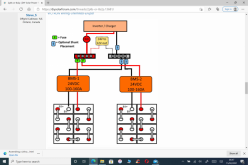I suggest reading
this short article for a very basic high level overview. I would caution that anyone presenting one or the other option as absolutely superior either doesn't fully understand the topic, are too narrowly focused on their own use case or priorities, or is not accurately representing the trade-offs for one reason or another.
There are many advantages to multiple packs in parallel ("series first"), however with any design choice there are trade-offs. If series first was the only valid option, you wouldn't see reputable EV, powerwall, and energy storage companies using parallel first in many situations.
I don't consider myself knowledgeable enough to have a definitive opinion, or a
full understanding of all the trade-offs. I am still learning. And in fact the more I learn, the more I feel that its a question not of what option is better, but a question of trade-offs and what approach best fits
your design goals and constraints and philosophy, and what fits best with the rest of your system.




